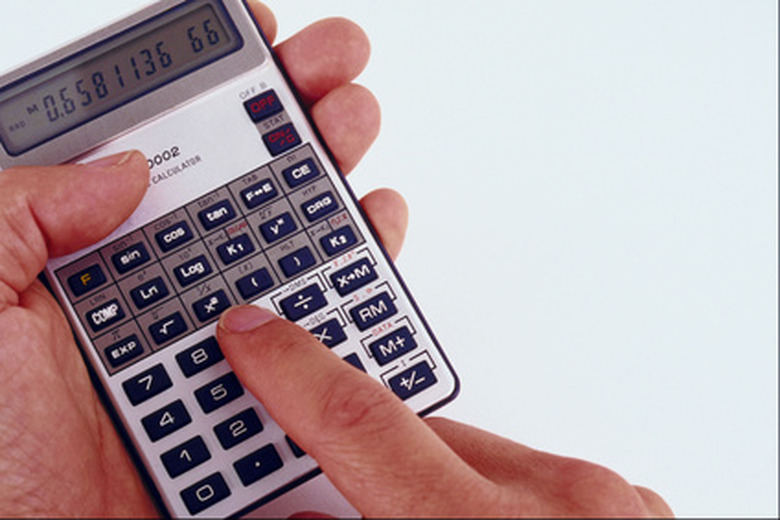How To Calculate The Area Of A Shape
To calculate the area of any common geometric shape, such as a rectangle or triangle, apply the area formula for that particular shape. That sounds simple enough, but the process actually varies with each shape because different shapes require different formulas. However, there are some basic steps to calculating area that are necessary regardless of the shape.
Step 1
Learn the formula that gives the area of the shape you are working with. For example, if you are finding the area of a rectangle, the formula you need is A = l x w. In words, the formula says "area equals the length times the width."
Step 2
Measure the dimensions required in the formula you are using. In the rectangle example in Step 1, the formula says to multiply the length times the width to have the area. Use a ruler or measuring tape to find those dimensions and plug them into the formula. In the rectangle example, suppose you measure and find the length of the rectangle to be 20 inches and the width to be 15 inches. Plug those measurements into the formula and the answer you will get is 300 square inches.
Step 3
Understand how the process in Steps 1 and 2 will vary according to the formula you use. The basic process is always the same. You identify the shape you are finding the area of, find the formula for that shape, measure to find the dimensions called for in the formula and plug those measurements into the formula. The variation occurs in the measurements different formulas require.
Step 4
Look at another example that illustrates the difference in the process. Suppose your problem is to find the area of a triangle. The formula for area of a triangle is A = ½ b x h, or in other words, area equals one-half times the base times the height. Find the measurements of the base and height of the triangle and plug them into the formula. If you measure the base to be 18 inches and the height to be 10 inches, the area of this triangle is 90 square inches because ½ x 18 x 10 = 90.
Step 5
Use the process in Steps 1 and 2 to find the area of squares, parallelograms, trapezoids, rhombi, regular polygons and circles. Just remember that each shape uses a different formula.
Things Needed
- Ruler or measuring tape
- Calculator (optional)
TL;DR (Too Long; Didn't Read)
Finding the area of irregular shapes is more complicated and requires principles of calculus.
Warning
Use the same units when measuring the different dimensions of the shape. For example, using inches for the width of a rectangle and feet for its length won't give a valid area measurement.
Cite This Article
MLA
Hinkle, Linda. "How To Calculate The Area Of A Shape" sciencing.com, https://www.sciencing.com/calculate-area-shape-4510091/. 24 April 2017.
APA
Hinkle, Linda. (2017, April 24). How To Calculate The Area Of A Shape. sciencing.com. Retrieved from https://www.sciencing.com/calculate-area-shape-4510091/
Chicago
Hinkle, Linda. How To Calculate The Area Of A Shape last modified March 24, 2022. https://www.sciencing.com/calculate-area-shape-4510091/
